#it is also objectively just very good psychological cinema with beautiful shots
Text


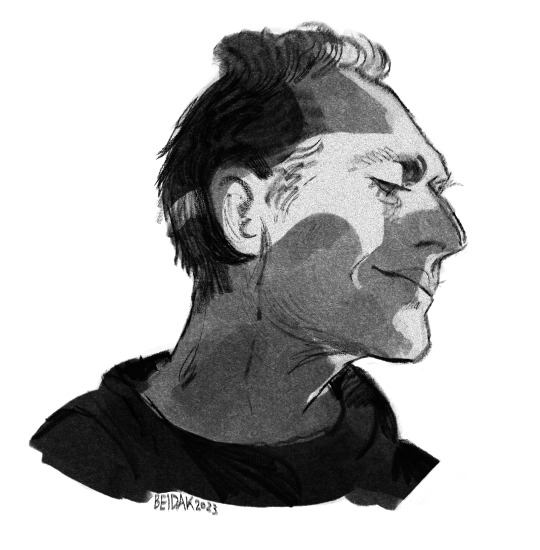

Studies and sketches from movie stills, first 3 are from ,,Ostatni strzał" (1959), last one is from ,,Lunatycy" (1960)
#digital art#polish cinema#art#stanisław jasiukiewicz#b&w#polska#photo study#ughhh ''Ostatni Strzał'' is one of my comfort movies#it is also objectively just very good psychological cinema with beautiful shots
2K notes
·
View notes
Text
A look into Killing Eve’s S3 Photography: Perspective

In today’s analysis we will be focusing on perspective and we will continue to understand the importance of framing and composition in storytelling. This time, I’ll use examples from only episode 5 and I’m sure you will understand why at the end of this reading.
Like I’ve mentioned in multiple occasions, films have a way of making the viewer feel a certain way by what is presented to them and by how it is presented. I’m sure you have noticed how certain movies don’t make you feel as connected and engaged to the characters or the story as others do. Now, this has a lot of reasons why and I’m not going to get into what makes us as viewers feel connected or not, but one of the most important reasons is how the camera “sees” a scene and how it presents it to us. That is done by an strategic use of objetive and subjective perspective.
“Get inside your protagonist's head, or don't. Your choice.”
Let’s start with some basic definitions.
The subjective perspective attempts to bring us into the experience of a character, giving us a mental or emotional perspective, while the objective perspective observes the action from a distance, it conveys information as if from an omniscient point of view, there is no emotional emphasis on a character’s perspective.
Let’s see this with an example of the scene in which Villanelle enters the family house for the first time.
Objective perspective:
It works as if we were an invisible person in the room watching the scene. It conveys information from an outside point of view.

Subjective perspective:


Usually by seeing what the character sees, it lets us get into the emotion that the they are feeling.


Now, even though it shows the scene from the character perspective it is important to not mistake it with a POV shot (in which the camera films exactly what the character sees). Notice how in the subjective perspective from this example we can still see the character in the frame while also seeing what she’s looking at.
Some filmmakers think that we shouldn’t overuse the POV shot, as it by not seeing the character’s reactions the audience wouldn’t fully connect with it. A way of making all of this effective? Intertwining both types of shots:

This subjective perspective is followed by a POV shot:
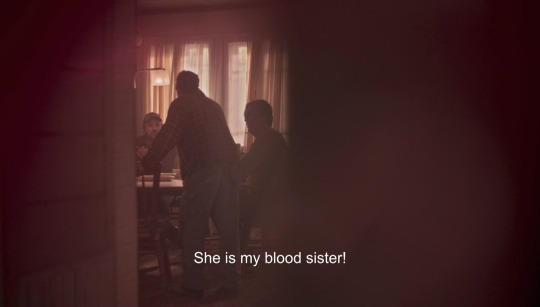
And then we go back to that previous shot so we can see her reaction while eavesdropping on the conversation:

Applying this technique with other different ones (camera angles, lenses, the use or absense of camera movement, the transitions and editing...) is what sets the subjective or the objective perspective.
There’s a good example in the scene in which Villanelle and her mother Tatiana meet for the first time in the episode.
This sequence could have been filmed from an objective point of view by placing the camera in a position in which we would have been able to see more of the room and in which there would have been more space between “us” and the characters.
Something like this:
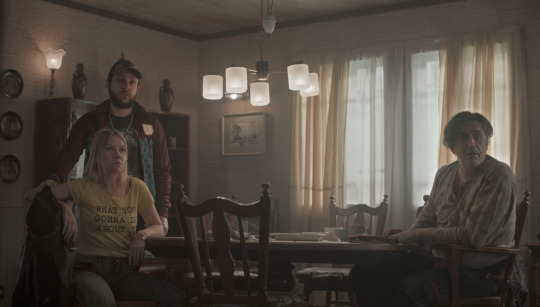
But instead, we get these very close subjective perspective shots:

(Subjective shot from Villanelle’s view)
There’s something in the way this scene is filmed and edited that makes us feel that something is definitely not right. Even though we’re just seeing a loving mother embrace her long lost daughter, right?
It’s all expressed through the framing, the movement of the camera, the camera angles and the editing (besides the actresses interpretation, of course).



Being such an importance episode for the character’s development it makes sense that we get a lot of subjective perspective shots, doesn’t it?
To reach the audience in an emotional level it is important for filmmakers to know what tools they have at their disposal and the psychological impact that these have when they are combined together.
Look how they combined a subjective perspective, an objective perspective and a let’s call it, “psychological shot” (By using a very shallow depth of field we metaforically get inside the brain of the character. More information in this post) all in a secuence that lasts no more than one minute:

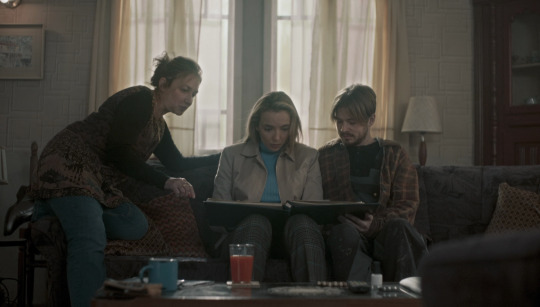
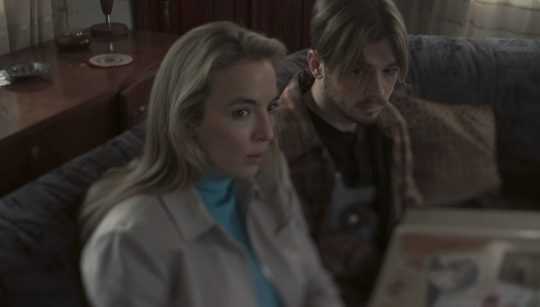
Here are some other visual examples of objective and subjective perspectives from episode 5.
Objective perspective

Subjective perspective


Now going back to the very first scene of the episode, thanks to the subjective perspective, we’re discovering the surroundings of the family house at the same time as the character as if she was leading us:
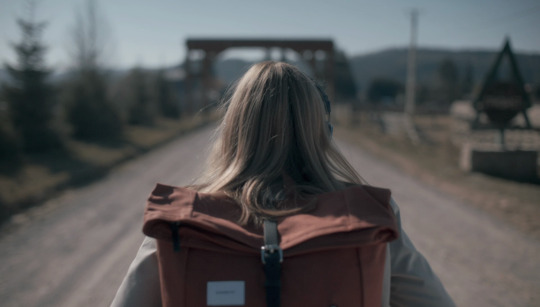
And following with shots like these:


To finish this analysis, I’d like to talk about the episode’s most important scene.
In this scene we can see most of the elements that I’ve already talked about in my other Killing Eve Season 3 Photography Analysis, which just proves of how important it is to combine all the elements for good storytelling. I invite you to check my other posts about cinematography and storytelling to fully understand the following concepts (links below)
Objective perspective:
It conveys information as if from an omniscient point of view.
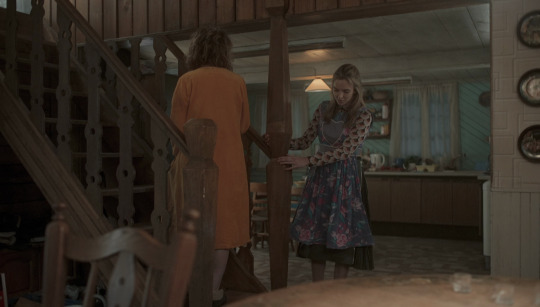
Subjective perspective
It grounds the scene in the mental or emotional perspective of a particular character.

Leading lines
Actual lines (and sometimes even imaginary ones) in a shot, that lead the eye to key elements in the scene.


Camera angles
Low angles to represent powerful characters.

High angles to convey feelings of distress.


Rule of thirds
Remember how there “should” be an empty space in the side to which the characters eyes are looking at? And how in a conversation, if we place the character in the opposite side it conveys a feeling of disconnection with the character they are talking to. Look at how Tatiana is framed most of the time in this scene (and also lots of times during the whole episode). It really says a lot about the psychology of this character and her relationship with her daughter.

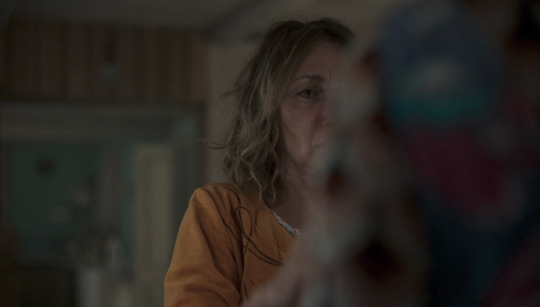
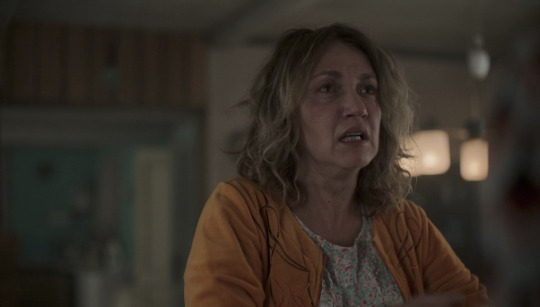
“You can use every cinematic tool at your disposal to illustrate these perspectives (angles, framing, the length of the lens, camera movement). In addition, playing with transitions from objective to subjective perspective within a single scene will alter the tone of your film. In the end, every filmmaker is tasked with establishing his or her own visual language. That's the beauty of movies.” nofilmschool.com
.
All original images belong to Killing Eve (BBC)
.
If you want to learn more about Killing Eve Season 3 Photography:
Rule of Thirds
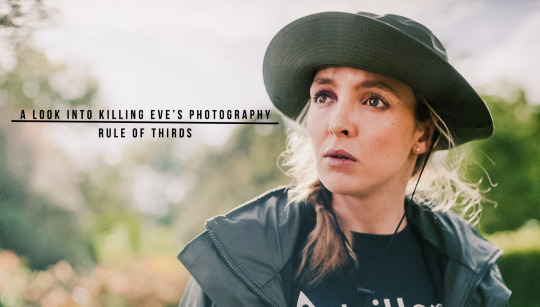
Camera Angles

Leading lines

Other related posts:
Understanding light
An insight into the editing process of my pictures
References of A look into Killing Eve’s S3 photography. Perspective:
Chernobyl - A Masterclass in Perspective
What Is Character Perspective?
https://blog.pond5.com/15760-a-different-perspective-how-pov-affects-video/
https://nofilmschool.com/2017/05/difference-between-objective-and-subjective-perspective-movies-cinema
https://blog.pond5.com/15760-a-different-perspective-how-pov-affects-video/
#A look into Killing Eve’s S3 photography#let's learn photography with ke#killing eve: perspective#killing eve cinematography#killing eve photography#tv photography#ke analysis#killing eve analysis#cinematography#direction of photography#killing eve#ke#ke photography analysis#villanelle#are you from pinner
192 notes
·
View notes
Text
Films of the Decade (20 - 11)
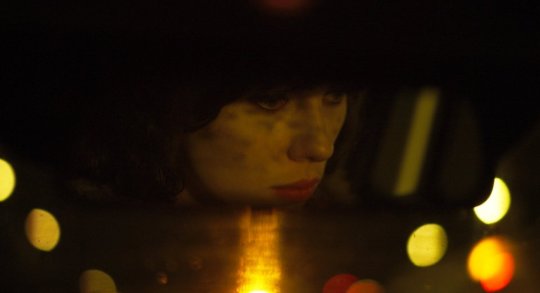
What can be said with the utmost confidence is that the quality of film has not slackened. Every now and again, some curmudgeon will grumble that film “is not the same”, “not what it used to be”, “not like the classics”. Oh puff, it will continue to sustain and challenge. Always has, always will. The one ultimate takeaway from this decade is that of how film is seen. By the end of this year, Martin Scorsese’s The Irishman will be released on Netflix, thus proving financial carte-blanche for already established filmmakers is now available outside of the giant studios. Streaming is happening and next year the Disney juggernaut will follow suit with their own service - truly a new, somewhat unnerving era.
So in revealing my favourite films of the past decade, let’s celebrate the glut of amazing work these last ten years have produced. The list honorable mentions would stretch the circumference of the Earth, but I was close to including: Kathryn Bigelow’s nail-biting Zero Dark Thirty, Nuri Bilge Ceylan’s slow-burn procedural drama Once Upon A Time in Anatolia, the colonial fever dream that is Zama, Todd Haynes’ lush Carol, Leviathan and its biblical injustices, Gianfranco Rosi’s quasi-documentary Fire at Sea, the lip-smacking Raw, and Debra Granik’s outstanding Leave No Trace. Not to mention the countless animated features and documentaries which show no signs of letting up. Here’s to the bar being raised forever more as we sit in the dark.
20. Locke
If there is one film this decade for which the weight was placed entirely on the shoulders of one actor to make it work, it is Tom Hardy in Locke. Essentially, it’s about a man trying to “fix” things over the phone while driving at night. Ultimately, his professional and personal life is obliterating around him, all due to a silly one-night stand. What we hear are voices bombarding the tiny space of a car. What we register as an audience is down to the brilliance of Tom Hardy. It is a role many actors would relish and go to town, but Hardy’s performance is introspective, collected, yet far from calm. Locke would work brilliantly as a radio play, but what is also impressive is how it genuine it feels someone driving through the night; from the smooth humming of the company car to the amber lights overhead. It lends a crushing air of solitude.
19. Song of the Sea
Animation has been the most consistently reliable form of media over many decades. The bar is so high, that I honestly struggled to pick one for this list. I floundered between the ingenius of Pixar’s Inside Out, Isao Takahata’s beautiful swansong The Tale of Princess Kaguya, the jaw-dropping sweep of The Red Turtle, the laugh-riot of The Lego Movie, the list truly goes on. One film left me inconsolable with floods of tears, and that was Tom Moore’s Song of the Sea. It is a film soaked in folklore, but it doesn’t fall into the trap of being twee. There is wave upon wave of gorgeous animation being reinforced by themes of family grief, brotherly responsibility and heartbroken spite. Song of the Sea defines a terrific balance many animated films achieved this decade: sublime artwork matching exceptional storytelling.
18. Dreams of a Life
British documentaries continued the up-and-up throughout the 2010s. It was tough to decide between Clio Bernard’s innovative The Arbor, Asif Kapadia’s poignant Amy, the lovingly delicate Notes on Blindness and the compelling A Syrian Love Story. What Carol Morley manages to do with Dreams of a Life is bring poetic legitimacy to a heartbreakingly lonesome death: Joyce Carol Vincent wrapping presents in front of the TV, she dies suddenly, and is not found for another three years. The interviews with various friends and distant family confirms Joyce’s presence in the world, but the recreations provide her a body and soul so sorely deserved.
17. Under The Skin
There is a tragic forgone conclusion with Under The Skin. The interpretations are plentiful: is it a feminist discourse on male attraction? Alien alienation? Or the destructive nature of human beauty? Director Jonathan Glazer uses the recognisable star power of Scarlett Johansson to plunge her in the grit. She is an alien entity who scouts her prey on the Glaswegian streets. At first she obliterates the characteristic lustful male, then the lines shudder and blur. Her objective becomes lost and she wanders into the Highlands. Even if you don’t buy the meanings behind Under The Skin, it is a striking audiovisual exercise. Not least of all, Mica Levi’s haunting and quivering score.
16. Girlhood
Is it asking for trouble to include two ‘Hoods’ in amongst the pack (spoiler) ? Cèline Sciamma is one of the best female directors to come out of this decade (look out for the sublime Portrait of a Lady on Fire this year). Her ebullient compassion for her teenage subjects against the Banlieue is why Girlhood is a powerful entry in the already-reputable French social-realism subgenre. Where there is roughness there are some thrilling interludes of joy. In particular, one scene with the gang of friends dancing in a hotel room with stolen goods, all set to the affirming “Diamonds” by Rhianna. Sciamma knows how to capture the vibe of a moment of happiness and let it flower. It makes social realism less a one-note descent into collapse. It takes a knowing and deft hand to pull that off.
15. Paddington 2
Paddington has all the charm and playfulness of a well-crafted pantomime. Paddington 2 visually represents that perfectly through flip-book canvases, which pull back like a colourful and jaunty set change. What is lovely is how first film was a sigh of relief. In other words, Paddington as a beloved literary character has not only been untainted, but it has been brought so cleverly up-to-scratch. The warmth of its message about inclusiveness and family is nothing terribly new, but Paddington has so much heart to back it up. Comedically, the films pack just the right amount of innuendo and silent cinema show pieces, to make this sort of humour seem so fresh. Paddington 2 refines the winning formula.
14. Force Majeure
Force Majeure is about a family going on a skiing trip. The family are initially mundane in how well-maintained they are. They are financially stable, brush their teeth in a squeaky clean bathroom with their electric toothbrushes, and the children are all kitted up. However in one riveting long still shot, the solid family unit is doomed. It is the fallout of that one event and the marital crumbling which makes Ruben Östlund’s Force Majeure deliciously tense. Better yet, it makes one want to watch that one event again. Is the father’s one instinctive act a true reveal of his selfish character, or is it something worth forgiving in the heat of the moment? There are no sturdy answers and that is the consequence of a fleeting act.
13. You Were Never Really Here
Lynne Ramsay’s You Were Never Really Here is a psychological revenge drama in which the revenge is achingly taken away from Joaquin Phoenix’s contract killer and us as an audience. It is a film about trauma. The scenes of violence are either jolting or they are exhaustively unsatisfactory; that is how realistically it is portrayed. One scene in particular robs us of a clear picture of how violence plays out. Like Phoneix’s Joe, we are left with a cold sweat. Revenge is an unhealthy picture through and through. Ramsay makes us feel the discomfort and the lack of glory, at odds with what we are so used to seeing these days.
12. A Separation
A Separation is a constant roll-out of trail and consequence. The ‘separation’ has formally commenced in the opening scene. The couple addresses the camera with pleas and arguments. The judge they’re speaking to has a line waiting outside with couples in a similar predicament, but we’re dealing with one. The film presents the separation like a case study, and it continues to be gripping and emotionally charged throughout. Director Ashgar Farhadi scrutinises our judgement of these characters, for there is always one morsel of information that leaves us second guessing. In the end, the film is tragic because there is no right and wrong. What is clever about A Separation is that, whilst there is a steady underlying context which points towards Iranian society, it is a borderless film.
11. O.J. Made In America
“There’s no more powerful a narrative in American society than race”. O.J.: Made in America charts a monumental rise-and-fall narrative like no other. For the good part of 467 minutes, there is a wicked absurdity in how the American Dream is favoured and unstable. Ezra Edelman’s charting of O.J. Simpsons’ career, lifestyle and persona is set very knowingly against the relentless chronicle of racial injustice and poverty. It makes re-living the already well-documented murder trial gut-wrenching and compelling all over again. O.J.: Made in America is already touted as one of the best sports documentaries since Hoop Dreams. Like Hoop Dreams, it is little to do with sports, it is about everything around it.
0 notes
Text
Understanding Movies (Seventh Edition)
By Louis Giannetti
ISBN 0-13-190836-7
1 - Photography pg.2
Realism and Formalism
“Three styles of film: realism, classicism, and formalism.”
“Realism is a particular style, whereas physical reality is the source of all the raw materials of film, both realistic and formalistic.”
In both realistic and formalistic films, certain details must be selected to emphasise; the element of selectivity isn’t as obvious in realistic films. Realism - trying to preserve the illusion that their film world is unmanipulated; an objective mirror of the real world. Style isn’t often noticed, more focus on what’s shown than how it is manipulated. Simplicity, spontaneity, and directness. Art that conceals art. A documentary image usually gets its emotional impact from it’s truth not beauty.
Formalism - deliberate stylisation and distortion of raw materials. Expression of subjective experience of reality. “Expressionists are often concerned with spiritual and psychological truths, which they feel can be conveyed best by distorting the surface of the material world.” High degree of manipulation, re-forming reality. Avant-garde cinema, abstract. Form and content aren’t so clear-cut.
“One way of understnading better what a film is trying to say is to know how it is saying it.” André Bazin pg.7
Theory of organic form - the belief that form and content are mutually dependent in flm as well as any other kind of art.
“The way a story is told is part of that story. You can tell the same story badly or well; you can also tell it well enough or magnificently. It depends on who is telling the story.” Herman G. Weinberg pg.7
The Shots
Different cinematic shots are defined by the amount of subject matter that is included within the frame. In general, decided by how much of the human figure is visible.
1. The extreme long shot.
2. The long shot.
3. The full shot.
4. The medium shot.
5. The close-up.
6. The extreme close-up.
7. The deep focus shot (usually a variation of the long and extreme long shot.)
1. From a great distance. Almost always an exterior shot. Spatial frames or reference for closer shots - establishing shots. Often seen in epic films, where locale plays an important role.
2. Ranges correspond approximately to the distance between the audience and the stage in the live theatre. The closest range is the full shot, just barely includes the human body in full - head near the top of the frame and feet near the bottom. Charlie Chaplin favoured the full shot because best suited to pantomime yet close enough for face.
4. Figure from the knees or waist up. Useful for expostion scenes, carrying movement and dialogue. The two shot - two figures waist up. Three shot - three figures. More than three - tends to be a full shot. The over-the-shoulder shot usually contains two figures, one with part of their back to the camera, the other facing the camera.
5. Very little if any locale. Concentrates on a relectively small object - human face. Due to magnification, tends to elevate the importance. Symbolic significance. Extreme close up is a variation of this. Only a person’s eyes or mouth.
7. Consists of a number of focal distances and photographed in depth. Sometimes called a wide angle shot (uses wide angle lens). Objects at close, medium and long ranges simultaneously, all in sharp focus. Director can guide the eye from one distance to another. Close across to long.
The Angles
The angle is defined by the placement of the camera, not the subject photographed. This can act as commentary on the subject matter - the angle can represent the significance.
In realism, extreme angles to tend to be avoided with most scenes being at eye level, roughly five to six feet off the ground; the way an observer might see the scene. Eye level shots aren’t usually dramatic because they tend to be the norm. The realist wants to make the audience forget the camera.
“Formalist directors are not always concerned with the clearest image of an object, but with the image that best captures an object’s expressive essence.” Extreme angles involve distortion. This can be a source of symbolism in the imagery. The formalist calls attention to the presence of the camera.
There are five basic angles:
1. The bird’s-eye view.
2. The high angle.
3. The eye-level shot.
4. The low angle.
5. The oblique angle.
Generally speaking, the more extreme the angle, the more distracting and conspicuous it is in terms of subject matter.
1. Bird’s-eye view. Could be considered most disorienting. Photographing a scene from directly above. Unrecognisable and abstract because we rarely see from this angle. Hover above a scene like an all powerful god; the people photographed seem antlike and insignificant.
2. High angle shot. Less extreme. Camera is placed on a crane or a natural high promontory. Sense of general overview. Ground or floor is usually the background. Movement is slowed down; this angle isn’t ideal for depicting speed. Useful for suggesting tediousness. High angles reduce the importance of a subject. The importance of setting and environment is increased. Also effective for showing a characters self-contempt.
3.Eye-level shot. Lets the audience decide which characters are important. Puts the viewer at the same level, equality between characters, preventing them from being seen condescendingly or sentimentally.
4. Low angles have the opposite effect of high. Increase of height so useful for suggesting verticality. Increase a short actors height. Motion is speeded up and in scenes of violence particularly, creates a sense of confusion. Environment is minimised, sky or ceiling is often the only background. Psychologically increases the importance of a subject. Figure looms menacingly over the spectator, who is made to feel insecure and dominated. Low angles often used in films of propaganda and scenes showing heroism.
5. Oblique angle involves a lateral tilt of the camera. When the image is presented, the horizon is skewed. A man will look like he is about to fall to the side. This angle is sometimes used for point of view shots. eg. suggest imbalance of a drink. Psychologically suggest tension, transition, and impending movement. Natural horizontal and vertical lines are converted into unstable diagonals. Not often used as they can disorient a viewer. This sense of visual anxiety can be good for showing violence.
0 notes
Text
My top 50 favourite films of 2017
This is probably the year that I gave the most number of 10/10 movie rating. What a great year.
Of the 160 movies I watched this 2017 from 34 countries, here are the top 50 (including 2016 releases that I only watched this year) that made my cinema experience awesome.
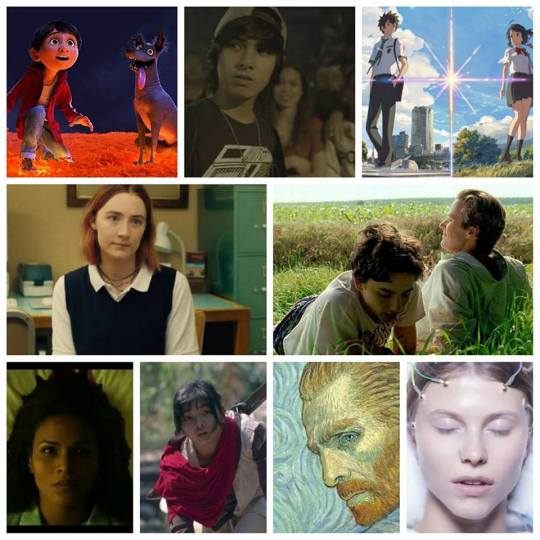
Yes, my list is kind of feminist, of course.
Kace’s Top 50
50. Tu Pug Imatuy [Arbi Barbarona, 2017, Philippines]

Great. Everything here feels authentic, it’s powerful. 7.5/10
49. Dunkirk [Christopher Nolan, 2017, United States]
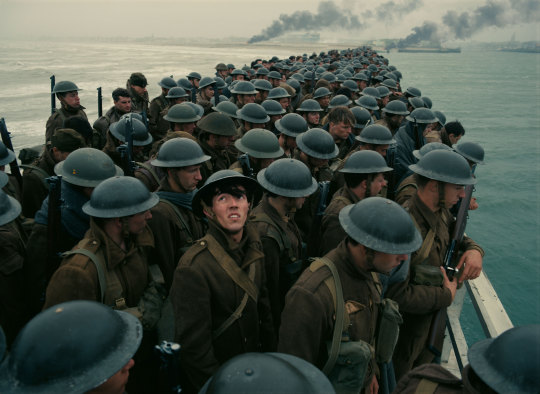
Boasts Nolan’s technical superiority. 7.5/10
48. I, Tonya [Craig Gillespie, 2017, United States]

Despite Robbie’s knockout portrayal, I still need to connect more with Tonya Harding. 7.5/10
47. Loving Vincent [Dorota Kobiela, Hugh Welchman, 2017, Poland-UK]
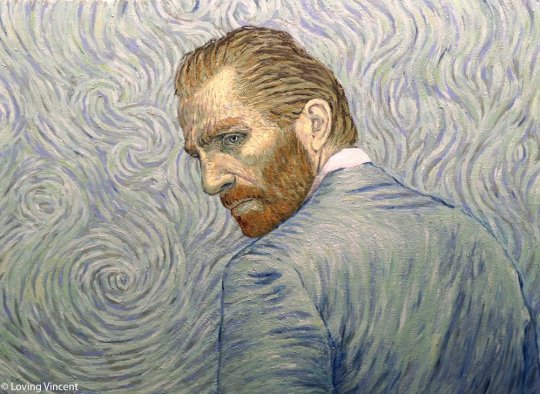
Focused too much on visual mastery, wasn’t impactful, narrative-wise. 7.5/10
46. Baby Driver [Edgar Wright, 2017, United States]
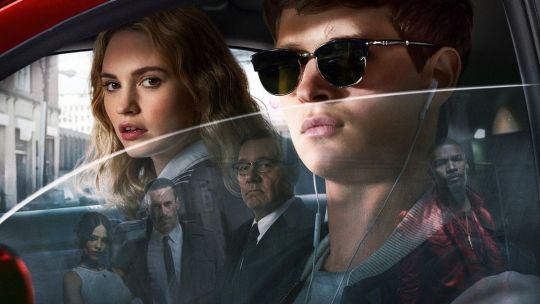
The ending blew it, but I had so much fun anyhow. 7.5/10
45. Everybody Loves Somebody [Catalina Aguilar Mastretta, 2017, Mexico]

Nothing much is special and new about it which is why I don’t understand why I love it to a great extent. 8/10
44. La Tortue Rogue [Michael Dudok De Wit, 2017, France, Japan]

A dialogue-less animation that proves that silence speaks a thousand words and could even provoke deep thinking. 8/10
43. Nocturnal Animals [Tom Ford, 2016, United States]

This is how a writer dies, and this is how a writer comes back with a kill. 8/10
42. L’Avenir (Things to Come) [Mia Hansen-Love, 2016, France]

At this point, everyone should know that there is nothing Isabelle Huppert cannot do. 8/10
41. Lipstick Under my Burkha [Alankrita Shrivastava, 2016, India]
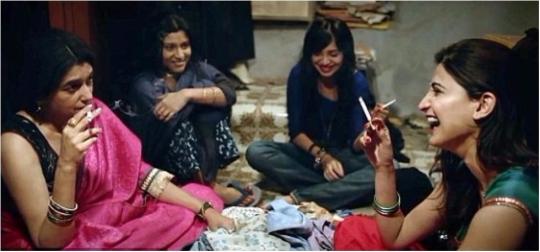
Comes with great intentions but lacks the powerful female characters the film supposed to have. 8/10
40. Ang Larawan [Loy Arcenas, 2017, Philippines]

Has such polished musicality that it overwhelms you to the point of it defying the flaws. 8/10
39. Blade Runner 2049 [Dennis Villanueve, 2017, United States]

Despite its cringe-worthy attack on my feminist self, it actually has a rich cinematic vision of a bewildered 2049. 8/10
38. Mother! [Darren Aronofsky, 2017, United States]

It wore me thin down to the core then ended quite brilliantly. My social anxiety is triggered, I am petrified and annoyed both at the same time. 8/10
37. D'Ardennen [Robin Pront, 2016, Belgium]

Just about the right amount of violence and grim unpredictability paced quite effectively. 8/10
36. Hidden Figures [Ted Melfi, 2017, United States]

For those questioning the existence of women figures in history, here’s a good start for you. 8/10
35. Hacksaw Ridge [Mel Gibson, 2016, United States]
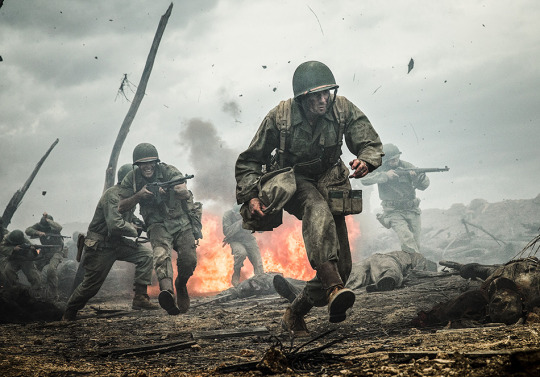
Is one of those war films that stand out. 8/10
34. Moglie e Morito [Simone Godano, 2017, Italy]
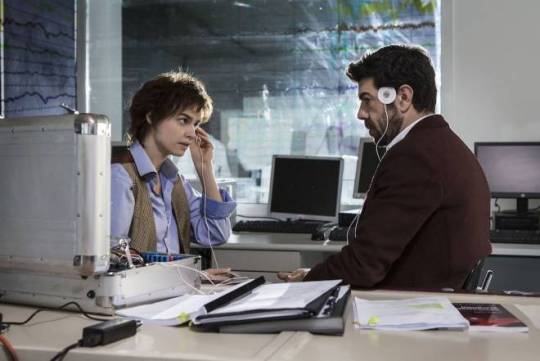
Could be the funniest film I have watched this year. 8/10
33. Personal Shopper [Olivier Assayas, 2017, France]

A subtle but dreary take on grief. Slow but rewarding in the end. 8/10
32. A Gift [Jira Maligool, 2017, Thailand]
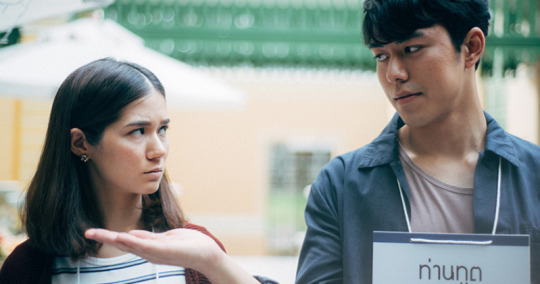
One of those films that could effortlessly make you laugh and cry. Charming. Very very charming – definitely a favourite. 8/10
31. Paki [Giancarlo Abrahan, 2017, Philippines]
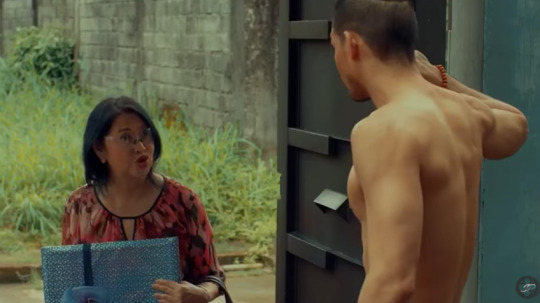
an illustration of how even the most prosaic narrative could be weighty through the power of storytelling and good direction. 8/10
30. Krigen [Tobias Lindholm, 2016, Denmark]

Feels a little rushed in the end, but affecting overall. 8/10
29. Beach Rats [Eliza Hittman, 2017, United States]
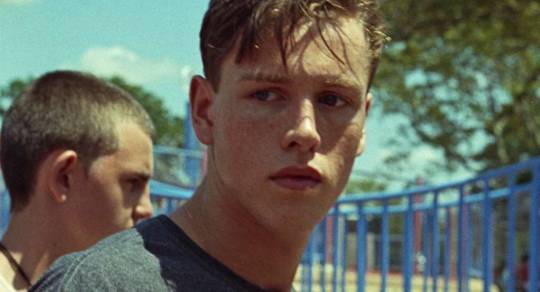
Overall, a substantial commentary on the stigma of homosexuality and its effect on why people choose to hide. 8/10
28. Chemi Bednieri Ojakhi (My Happy Family) [Nana Ekvtimishvili, Georgia, 2017]

Paints quite vividly a life of a woman in a patriarchal society. Remarkable. 8/10
27. Paterson [Jim Jarmusch, 2016, United States]
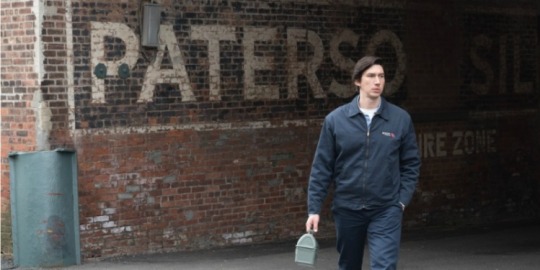
Poetic is an understatement. 8/10
26. Changing Partners [Dan Villegas, 2017, Philippines]

uses strong dialogues and character play that makes it rare and magical. 8/10
25. Coco [Lee Unkrich, 2017, United States]

Understands what La La Land doesn’t – relationships shouldn’t suffer when achieving our dreams. 8/10
24. If Cats Disappeared From the World [Akira Nagai, 2016, Japan]

a tearjerker drama that examines the essence of living as opposed to just merely existing. 8/10
23. The Killing of a Sacred Deer [Yorgos Lanthimos, 2017 Greece, UK , US]
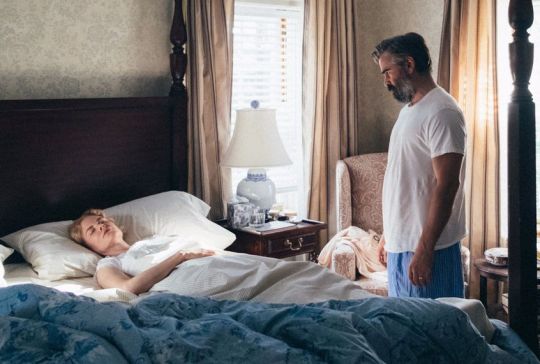
Yet another solid psychological thriller by the master of contemporary enigma. 8/10
22. Love You to the Stars and Back [Antoinette Jadaone, 2017, Philippines]

Kind of wants to make you believe in destiny, kind of succeeds in that sense. A tender take on teenage love and loss, so pure, it’s precious. 8/10
21. Battle of the Sexes [Jonathan Dayton, Valerie Faris, 2017, United States]

Makes me feel bad for not being alive yet when it happened. Ace. 8/10
20. El Acompanante (The Companion) [Pavel Giroud, 2016, Cuba]

Distinct character pairing in an equally distinctive tales of adversity. 8/10
19. One Week Friends [Masanori Murakami, 2017, Japan]

There’s a good reason for my sunken eyes right now, right? 9/10
18. Birdshot [Mikhail Red, 2017, Philippines]

Beautifully shot, it swims along two storylines at par – both in search for impunity in a corrupted society. Too relevant. 9.5/10
17. First Girl I Loved [Kerem Sanga, 2016, United States]

a tender coming-of-age drama that tackles discovering self-identity and the fear that comes with that realization. So raw, it’s thrilling. 9.5/10
16. Les Innocentes [Anne Fontaine, 2016, France]

a battle between religious order and moral conscience, one whose importance cannot be omitted. 9.5/10
15. Bad Genius [Nattawut Poonpiriya, 2017, Thailand]
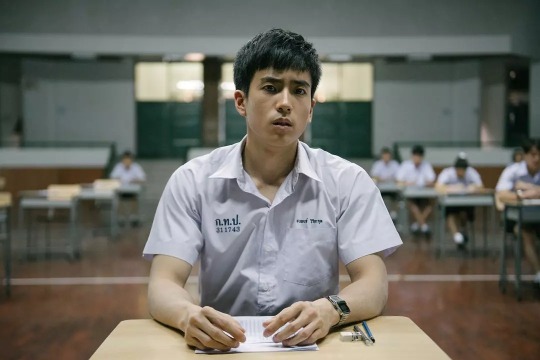
Brimming with excellent editing and direction, it is a thriller and an ingenius commentary on how social class inequalities lead to inevitable corruption. Brilliant. 9.5/10
14. La La Land [Damien Chazelle, 2016, United States]
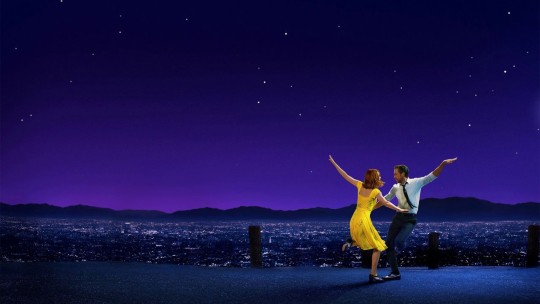
Is really technically excellent, but is also really disconnected. Kind of something you adore rather than love. 9.5/10
13. Manchester by the Sea [Kenneth Lonergan, 2016, United States]

a quiet yet profound drama narrated too effectively resulting to a mournful yet beautiful symphony. A film that brings the kind of sadness that is both painful and alluring. 9.5/10
12. On Body and Soul [Ildikó Enyedi, 2017, Hungary]

Too cold yet too heartfelt in all its complexity. 9.5/10
11. Thelma [Joaquim Trier, 2017, Norway]

Meticulously-crafted film that questions fundamentalism as a basis for joy and purity. I yearn for films as poetic as this. 9.5/10
10. Beats Per Minute (BPM) [Robin Campillo, 2017, France]

Goosebumps. This is a film clear of its objective, it is exhilarating and exhausting in the good kind of way. 10/10
9. Respeto [Treb Montreras II, 2017, Philippines]

Uses the power of words to compare past and present. Shows the cycle of oppression in a well-crafted film of bewitching artistry. 10/10
8. Three Billboards Outside Ebbing, Missouri [Martin McDonagh, 2017, United States]
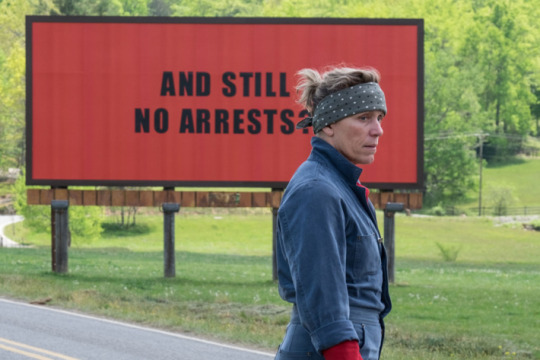
Too much hate and too much heart both at the same time. It is as shocking as it is enchanting. 10/10
7. Moonlight [Barry Jenkins, 2017, United States]
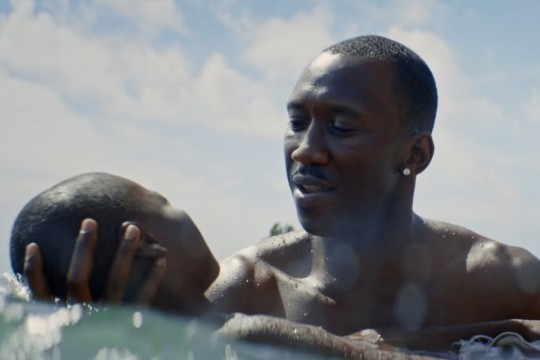
A rare impressionistic film on a man’s struggle to finding himself, something so rich in poetry and visual excellence, it’s spell-binding. 10/10
6. Salvage [Sherad Sanchez, 2017, Philippines]

A film that’s meant to look like a found footage, with one single camera perspective. It used unconventional, long continuous odd angles and silence that made it feel so raw and real, it’s haunting. 10/10
5. Arrival [Denis Villanueve, 2016, United States]
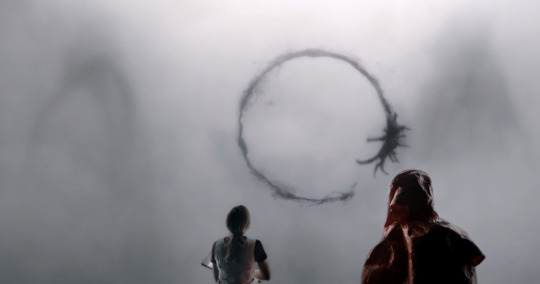
An admirable sci-fi thriller where aliens teach humans about humanity. 10/10
4. Your Name (Kimi No Na Wa) [Makoto Shinkai, 2016, Japan]

Star-crossed love at its smartest, warmest, and vividly-made anime. Something highly satisfying, I have no words. 10/10
3. Bliss [Jerrold Tarog, 2017, Philippines]
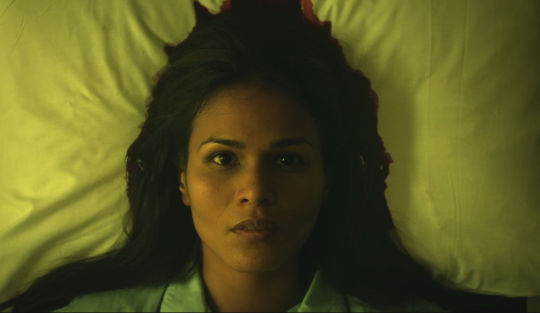
Touches the fine line between dreamland and reality, and examines dreams or aspirations as mere illusions. It is wicked. It’s well-crafted. It’s a mindfuck. It’s deeply, as in deeply affecting 10/10
2. Call Me By Your Name [Luca Guadagnino, 2017, Italy, Brazil, France, United States]

Its authenticity is incredibly palpable, I can taste it in my mouth. Something made with much love, my heart aches. Timothée Chalamet is remarkable. That last frame is unforgettable. 10/10
1. Lady Bird [Greta Gerwig, 2017, United States]

Small scale with great impact. It’s the type that doesn’t want to make you cry but makes you cry anyway. I love it with all my heart. 10/10
Here’s the trailer for Lady Bird:
youtube
Related links:
Full list of all films I watched in 2017
Worst film of 2017: Kamandag ng Droga
Pista ng Pelikulang Pilipino
Bliss
Respeto
Top films of 2016
Top films of 2015
Top 25 Filipino Films
Bliss
Salvage
Respeto
Birdshot
Love You To The Stars and Back
Changing Partners
Paki
Ang Larawan
Tu Pug Imatuy
Kita Kita
Singing in Graveyards
Kiko Boksingero
Haunted: The Last Visit to the Red House
Bagahe
Baconaua
Alipato
I’m Drunk I Love You
The Write Moment
Baka Bukas
Nabubulok
Instalado
High Tide
Sa Gabing Nananahimik ang Mga Kuliglig
Siargao
Medusae
0 notes